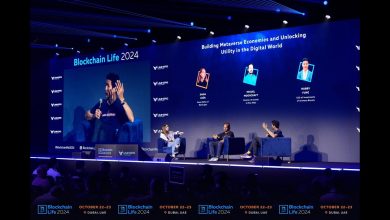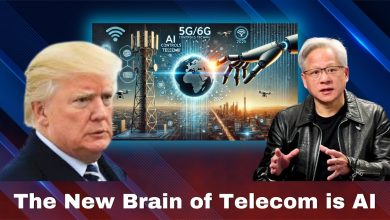 Imagine a future where gaming transcends the boundaries of screens, devices, and even physical spaces, all fueled by the blazing speed, ultra-low latency, and dynamic scalability of 5G networks.
Imagine a future where gaming transcends the boundaries of screens, devices, and even physical spaces, all fueled by the blazing speed, ultra-low latency, and dynamic scalability of 5G networks.
This isn’t just an evolution—it’s a revolution that redefines how we play, compete, and connect.
Picture this: You slip on a lightweight AR headset and step into a fully immersive, massively multiplayer world that blends seamlessly with your real environment.
Powered by 5G’s edge computing and near-instantaneous data transfer (latency as low as 1 millisecond), the game renders photorealistic graphics in real time, with no lag or buffering.
The streets of your city transform into a futuristic battlefield, where holographic enemies leap from alleyways and your teammates—scattered across continents—fight alongside you as if they’re physically present. AI-driven intent-based automation, running on 5G, dynamically adjusts network resources, ensuring every player gets flawless performance, whether they’re sprinting through a virtual jungle or commanding a fleet in a space opera.
Featured Thought Leaders: Ericsson
In this session Ericsson’s CTO Erik Ekudden and Olivier Avaro, CEO of Blacknut, discuss the future of mobile cloud gaming.
To enhance application innovation the evolution of network developer interfaces through exposed and easy-to-use network functions are vital. Cloud gaming is a perfect case to demonstrate the potential of open network APIs, but is also relevant for other areas like productivity, communication, collaboration, and enhanced video.
The APIs should be the same across different operators so they are simple to use for the developers and can be used at scale and not in limited geographies. They also need to be simple in terms of business model, and predictable from a costing perspective. This is where companies like Vonage (part of Ericsson) can truly support the ecosystem.
Network Slicing
Now, scale it up. Stadiums host global esports tournaments where thousands of players and spectators participate simultaneously. 5G network slicing dedicates bandwidth to each element—player controls, live 4K/8K streaming, and interactive crowd features like real-time voting or AR overlays. Fans don’t just watch; they join the action, piloting drones or influencing the game world via their devices, all synced perfectly thanks to 5G’s capacity to handle massive concurrent connections.
Gaming on the go becomes effortless. With 5G’s ubiquitous coverage and high-speed uplinks, your console-quality game streams directly to your phone or a foldable screen from a cloud server, no downloads required. Mid-battle, you hop on a self-driving car, and the game shifts seamlessly to the vehicle’s interior displays, adapting to your new context without missing a frame. AI anticipates your playstyle, preloading assets to the nearest edge node so that even in a high-speed chase, your experience remains uninterrupted.
Social gaming takes a wild leap too. Friends join your virtual world via avatars that mimic their real-time expressions and movements, captured by 5G-connected wearables. Together, you explore procedurally generated universes that evolve based on collective decisions, with the network’s intent-based orchestration ensuring smooth scaling as more players drop in. Developers roll out updates or entirely new game modes in hours, not weeks, leveraging 5G’s agility to test and deploy at lightning speed.
The thrill peaks with haptic feedback suits and neural interfaces—early versions already in development—linked to 5G’s low-latency backbone. You feel the recoil of a plasma rifle or the rush of a jetpack ascent, while AI fine-tunes the sensory output to your preferences. Competitive gaming becomes a full-body experience, blurring the line between virtual and real adrenaline.
This 5G-powered gaming future isn’t just about tech—it’s about freedom. No more bulky hardware tethering you to one spot, no more lag killing your clutch moment, and no more waiting for the action to load. It’s a world where imagination sets the limit, and 5G ensures the network can keep up with every pulse-pounding twist. The game isn’t just on—it’s everywhere, all the time, and more thrilling than ever.
 HyperSphere Gaming
HyperSphere Gaming
“HyperSphere Gaming” starts as a 5G-powered gaming revolution—blazing-fast, immersive, and globally connected—but its potential stretches far beyond tech specs into a cultural juggernaut that reshapes how we live, create, and bond.
Picture it: a movement where gaming isn’t just play, but a shared language, a lifestyle, and a stage for human expression, all orbiting the “HyperSphere” of infinite possibility.
At its core, HyperSphere Gaming leverages 5G’s ability to fuse virtual and real worlds, turning cities into playgrounds and players into icons. Imagine annual “HyperSphere Festivals”—massive, hybrid events where millions join via AR headsets or mobile screens, competing in real-time challenges that spill into streets and skies.
A kid in São Paulo tags a virtual beacon on a drone, while a pro in Seoul counters with a holographic ambush, all streamed live in 8K to a global audience. Fans don’t just watch; they shape the narrative, voting on twists or joining as wildcard players, their inputs synced instantly by 5G’s edge computing. It’s part Olympics, part Woodstock, part sci-fi epic—a cultural touchstone that defines a generation.
Beyond spectacle, HyperSphere becomes a creative crucible. Aspiring artists design skins or levels in its open ecosystem, their work minted as NFTs and traded in a thriving digital economy. Musicians drop beats for in-game soundtracks, remixed live by AI based on player vibes, while writers craft branching stories that evolve with every match. 5G’s low latency and high bandwidth make this collaboration seamless, turning HyperSphere into a meritocracy of imagination where anyone, anywhere, can rise to fame. Think of it as a global talent incubator, spotlighting voices from Lagos to Reykjavik.
Socially, it redefines connection. Friendships form across continents as squads battle in HyperSphere’s persistent worlds, their avatars reflecting real-time emotions via 5G-connected wearables. Families separated by oceans meet in virtual arenas, not just to play but to celebrate birthdays or holidays, the network’s scalability ensuring no one’s left out. It’s a digital campfire—raw, communal, and electric—where “gamer” becomes a universal identity, not a niche label.
Culturally, HyperSphere sparks new rituals. Kids mimic pro players’ signature moves in schoolyards, while fashion brands drop AR-threaded clothing synced to in-game avatars. Universities offer “HyperSphere Studies,” dissecting its impact on psychology, economics, and tech. Movies and novels emerge, chronicling its legends—think a blockbuster about a rogue coder who hacks the Sphere to unite a fractured world. It’s not just a platform; it’s a mythology, a shared dream fueled by 5G’s invisible threads.
The phenomenon peaks as HyperSphere blurs reality itself. Players influence real-world causes—winning a match funds a school, tracked by blockchain transparency—while governments eye its power, hosting diplomatic “peace games” in its neutral, virtual space. It’s chaotic, exhilarating, and unstoppable—a cultural supernova born from 5G’s promise, proving gaming can be more than entertainment: it can be a way of being.



